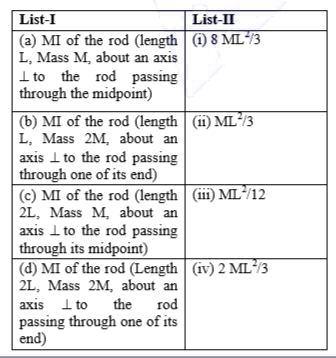Choose the correct answer :
The average efficiency of energy transfer from herbivore to carnivore level is :
5%
10%
20%
30%
The correct Answer is:B
To solve the question regarding the average efficiency of energy transfer from herbivores to carnivores, we can follow these steps:
1. Understand Trophic Levels: In an ecosystem, organisms are arranged in trophic levels based on their feeding relationships. Herbivores are primary consumers (Trophic Level 2), while carnivores are secondary consumers (Trophic Level 3).
2. Energy Transfer Concept: When energy is transferred from one trophic level to another, a significant amount of energy is lost, primarily as heat. This is a fundamental concept in ecology.
3. Apply the 10% Rule: The 10% rule of energy transfer states that, on average, only about 10% of the energy from one trophic level is transferred to the next level. This means that when herbivores (Trophic Level 2) consume plants (Trophic Level 1), only about 10% of the energy they obtain is available to the carnivores (Trophic Level 3) that consume them.
4. Conclusion: Therefore, the average efficiency of energy transfer from herbivores to carnivores is approximately 10%.
Final Answer:
The average efficiency of energy transfer from herbivores to carnivores is 10%.
---
The average efficiency of energy transfer from herbivores to carnivores is 10%.
Topper's Solved these Questions
- ECOSYSTEM BOOK - MODERN PUBLICATIONCHAPTER - ECOSYSTEM EXERCISE - REVISION EXERCISES (II. VERY SHORT ANSWER QUESTIONS) (A. QUESTIONS FROM STATE BOARD EXAMINATIONS)
23 Videos
- ECOSYSTEM BOOK - MODERN PUBLICATIONCHAPTER - ECOSYSTEM EXERCISE - REVISION EXERCISES (II. VERY SHORT ANSWER QUESTIONS) (B. QUESTIONS FROM CBSE EXAMINATIONS)
10 Videos
- ECOSYSTEM BOOK - MODERN PUBLICATIONCHAPTER - ECOSYSTEM EXERCISE - QUICK MEMORY TEST (C. Choose the correct alternative)
15 Videos
- BIOTECHNOLOGY AND ITS APPLICATIONSBOOK - MODERN PUBLICATIONCHAPTER - BIOTECHNOLOGY AND ITS APPLICATIONSEXERCISE - CHAPTER PRACTICE TEST (SECTION - E)
2 Videos
- EVOLUTIONBOOK - MODERN PUBLICATIONCHAPTER - EVOLUTIONEXERCISE - CHAPTER PRACTICE TEST (SECTION-D)(CASE-BASED SHORT ANWER )(THREE MARK EACH)
2 Videos
Similar Questions
Choose the correct answer from the following.
View SolutionWhat energy percentage can be captured by the organisms of next trophic level
or
transfer of energy from one trophic level is according to second law of thermodynamics. The efficiency of energy transfer from herbivorous to carnivorous is
View Solution
Knowledge Check
When food energy passes from herbivores to carnivores,
ASome energy is increasedBSome energy is decreasedCEnergy remain unchangedDNot relevant.The transfer of energy from one trophic level to another is governed by the 2nd law of thermodynamics. The average efficiency of energy transfer from herbivores to carnivores is
A0.05B0.1C0.25D0.5Choose the correct answer :
In an ecosystem :AMovement of energy is unidirectionalBEnergy cycling is an independent processCEnergy cycling and nutrient cycling a coupled processDMicro and macronutrients cycle at same pace
Amount of energy transfered from one trophic level to next is
View SolutionChoose the correct answer :
Acclimatization is :
View SolutionThe transfer of food energy from plants through herbivores to carnivores is called:
View SolutionAmount of energy transferred from one trophic level to next is
View Solution
Choose the correct answer from the options given below :
View Solution
